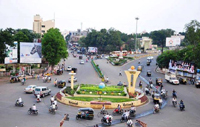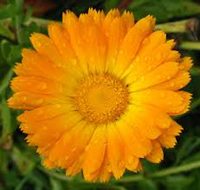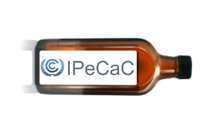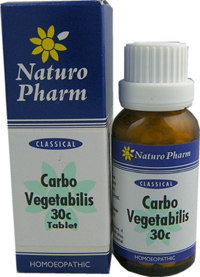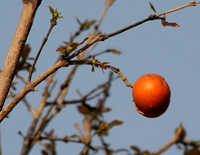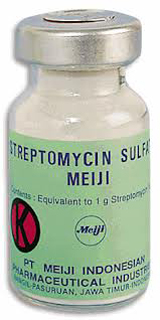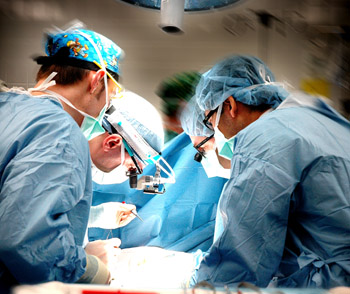Homoeopathy
Some reminiscences of the use of homoeopathic remedies in surgery
Editor's note
Dr. D. E. Mistry's experiences are interesting as he has been sufficiently conversant with both allopathic and homoeopathic systems of medicine. He was a Professor of Surgery at the V. M. M. Medical College, Solapur, India, and is currently editing the ‘Homeopathic Clinical Case Recorder’ published from Ahmednagar, India.My interest and study of homoeopathy began in 1963, when my father, an asthmatic, reached a stage of resistance to almost all the routine allopathic medicines then in use. From 1966 till 1976 — after which I left the General Hospital at Solapur — I had ten years to try out various homoeopathic medicines, at times singly and at times in combination, for all the cases in my unit. I had under my supervision about a hundred surgical beds, male, female and pediatric, plus about twenty beds for burn cases, during those years. One of my earliest cases was a case of pyocele. This was in a male of about 50 years who was admitted in the ward at night with high fever, toxic condition and a huge fluctuating scrotal swelling. He was to be operated the next morning and was on supportive I.V. therapy meanwhile. My housemen and registrar were all watching eagerly to see what my little pills would do. I remember the dilemma I was in. I had not given the routine antibiotics (penicillin, in those days) and did not know whether the homoeopathic pills would cause the abscess to burst open or get absorbed. The choice was between Hepar Sulphuricum and Silicea. Since in those days I had mainly biochemics to help me, I asked my housemen to give Silicea 6x, every hour, regularly. After about six to seven doses the whole pyocele evacuated itself and the patient's temperature and toxemia dramatically subsided. Silicea, I remember, was continued four times daily for a week or more and the patient went home with a minimally discharging sinus. This created a lot of interest in my house staff and nurses for this new way of treatment.
That there was a considerable opposition from some of my own surgical colleagues is a different story altogether. My unit was dealing with traumas of all sorts and most of the operations and emergencies were due to head injuries. It was not possible for me to individualise the remedy in such a large set-up — moreover the housemen were frequently changing. How could I continuously explain as to what to look for and ask them to tell me the changing symptoms needed for acute cases? I therefore evolved my own preoperative and post-operative mixtures for clean cases. It involved Arnica, Rhus Tox, Hypericum and Calendula, all in either 3x or 30C potency. This was kept in the ward for all cases that were to be operated. Four doses were given twenty-four hours prior to operation and then continued post-operatively four to six hourly till the stitches were removed. Though this is not classical homeopathy, the circumstances were such that I had to show that the homoeopathic remedies were better if not equal to the routine of Penicillin and Streptomycin. At least 80% of my operated cases went smoothly only on this, much to the surprise of my loyal house staff and nurses. When there was infection or when I had operated on an infected case, like say, a perforated ulcer, a leaking appendix or a traumatic abdomen, I prepared another combination called KHARP: Kali phos, Hepar, Arnica, Rhus tox and Pyrogen. This given repeatedly, reduced pyrexia, made wounds cleaner and only on rare occasions did I need to use supplementary antibiotics. All infected wounds were dressed by diluted Calendula, at times with dilute Hypericum QT (mother tincture). During those days, surgeons were still enucleating prostates through the bladder and in all such cases the empty prostatic cavity was packed with gauze strips dipped in Calendula solution. This pack was removed after twenty-four hours and I don’t recollect a single case of the residual prostatic cavity causing trouble later. Some of my housemen later utilised the same packing of Calendula in E.N.T., when they packed the tonsillar bed. In fact even after I left the General Hospital, the fame of Calendula dressing for infected wounds resistant to antibiotics, was such that many registrars secretly utilised Calendula for such cases. Here is a brief account of the various remedies I had occasion to use.
(1) Pre-operative anxiety
(a) Aconite ‘M’ the previous night and morning of operation.
(b) Fright and anxiety especially in children Aconite with Phosphorus, either combined or Aconite at night and Phosphorus next morning. Where general anaesthesia of a longer duration was expected, at least two to three doses of Phosphorus ‘M’ or 200 C were given.
(2) During the operation
On those patients who were operated under spinal or local anaesthesia, globules of Arnica 30 were put on the tongue throughout the operation, if the patient was not heavily sedated.
(3) Post-operatively
(a) For nausea or vomiting we gave Ipecac 200. When the patient took long to come out of anaesthesia, I would repeat Phosphorus. Retching, vomiting and gagging, demand for cold or ice cold water, needed Phosphorus; if the patient was better by hot tea, Arsenicum Album was given.
(b) Shock
In all such cases we had the usual noradrenaline drip going. If the blood pressure was borderline 90/60mm Hg, I would in addition give Carbo vegetabilis 200 or ‘M’ repeatedly. In those days I was not aware of Strontium Carbonicum. Carbo vegetabilis certainly helped to raise and establish blood pressure. At times I have ventured to push it through the I. V. tubing, to notice a dramatic rise of blood pressure by 10 to 15 mm of Hg.
(c) After the patient came out of shock the homoeopathic remedies were continued throughout the stay till the patient was discharged.
(d) If the wounds became infected post-operatively KHARP globules were given. When the infection was heavy, as for example in faecal contamination of the peritoneal cavity, a routine antibiotic cover was administered for a few days in addition to KHARP globules.
(4) Burns
All dressings for burns were done either with a very dilute solution of Calendula, or Calendula ointment was gently applied on burnt areas if they were of a localised nature. Aconite was given repeatedly three to four times and if shock was severe, Carbo vegetabilis ‘M’ administered straight away. If the patient complained 'of severe burning, Arsenicum Album was favoured over Cantharis. I had no experience with Urtica Urensin burns but did give Causticum for second and third degree burns and also Pyrogen 200 if the fever was high. The prognosis was not hopeful if the burns were deep. Superficial burns were not given antibiotics but all deep burns were given an antibiotic cover for as long as needed.(5) Post-operative distension
Carbo vegetabilis was the favourite remedy here. Raphanus was tried on those occasions when Carbo vegetabilis had failed and a silent abdomen seen. However, results were not satisfactory with Raphanus. For abnormal colicky peristalsis, Nux Vomica 30 repeatedly did give good results. I would advise Ignatia for women with irregular and uncoordinated peristaltic activity which sometimes follow laparotomies.(6) Stitch abcess
For small stitch abscesses or superficial wound infections, Silicea was given: four times a day in 6x or 12x potencies. If a piece of catgut was the cause, it came out quickly.(7) Appendicitis
Appendicitis cases were my favourites. If the patient showed marked tenderness and hyperaesthesia in the right iliac fossa, Belladona 30 or 200 was given for the first day. From the 2nd day onwards Bryonia 200 Q.I.D. was routinely given. Bryonia was invariably also the remedy of choice for ‘appendicular mass’ which was stilliocalised — given over a period of seven to ten days. The mass invariably reduced in size and it was hardly palpable. After the patient was discharged, he was followed up in the O.P.D., where quite often, I have given either Sulfur 200 or Lycopodium 200 as a follow-up to Bryonia. None of my cases treated thus, came back for an elective appendicectomy except one. This patient was a frail unmarried Muslim girl who was admitted at least five times, each time with a tentative diagnosis of appendicitis. She was given Bryonia every time to which she responded and went home. She never came for follow-up unless she developed an acute attack again. Then the usual thing happened. She got married, left Solapur and got an acute attack of appendicitis at her in-laws’ place at Bijapur. Refusing all allopathic help she was readmitted in my unit for the sixth time. This time on my advice she agreed to an operation. When I opened the abdomen, the appendix was a shrunken fibrous cord with inflammation confined to opening from the caecum. Nature had almost done the job (aided by Bryonia, I guess) of making the appendix unworthy of surgical removal. Anyhow, she returned to her in-laws’ place, met me after two years, reporting that she had had no trouble since her operation.(8) Prostate problems
Patients who had benign enlargement of the prostate were not willing to give a satisfactory trial to homoeopathic remedies. However, for those who were willing: between 50 to 70 years; it was Staphysagria 30 BD and Sabal Serrulata QT once or twice for a trial period of one month. If they improved, this was further continued. If not, a prostatic enucleation was done. For those above 70, it was Conium 30 with or without Sabal Serrulata QT. Nowadays with the increasing frequency of trans-urethral surgery I hardly get cases of enlarged prostate coming to homoeopathy.(9) Piles
Simple piles were given packets of Nux Vomica at night and Sulfur in the morning for 10 days. Only 20% came back either for more of these ‘small pills’ or because they had not responded. All were examined for any growths or chronic liver problems. Anal fissures were a tougher problem and it was easier to do a simple anal dilation than to wait for the results of Nitric acid or Ratanhia.(10) Head Injuries
Head injuries admitted to my ward came in all stages — simple concussion, pre-coma and coma. The simple ones were given Arnica and Ruta, those with concussion, the same plus Natrum Sulphuricum. The ones in coma were most difficult to treat as they often needed an emergency trephining but even these were kept on Arnica, Ruta and Natrum Sulphuricum either in rotation or combination. For the housemen and nursing staff, it was easier to give a combination remedy rather than give them singly — and it was also less traumatic for me and my sleep.(11) Fractures
All orthopedic fractures were administered Symphytum 30 for a month at least and the children Calcarea phosphorica 6x in addition. There was distinct improvement in wound healing and calcification.(12) Lymph Node Enlargement
For tubercular lymph nodes or even non-specific enlargement of lymph nodes, I had set out a standard format for my house staff. Tuberculinum 200 or ‘M’ was given monthly for three to four months. Most children were thin and puny coming from families with poor nutritional status. These children were kept on Calcarea Phosphoricum 6x T.D .S. to Q.LD. for a month. If they improved, it was continued for three to four months. If they were not helped, we shifted to either Silicea 6x or Arsenicum iodatum 6x depending on whether they were constitutionally chilly or hot. The E.S.R. and X-ray plates were checked after three months and the same treatment continued if all parameters including clinical improvement were continuing. Very few needed Streptomycin or other allopathic medicines.I feel the reader of this article would by now have had enough of remedies so I venture into the vexing question of surgery and suppression. I have always asked this question to myself whether we as surgeons are aware of the possibility of the suppression of disease through surgery? I must say that such a question would not enter the brain of a pure allopathically trained surgeon. Only a surgeon knowing the principles of homoeopathy would ruminate on this. Many times surgery deals with what I call ‘grey areas’. Cases where the surgeon steps in because medicine has failed or has no adequate ‘curative answer’: the cyst, thyroid nodule, appendix, fibroid uterus, gall bladder and kidney stones, tonsils and adenoids; representing the terminal aspect of the individual’s diseased status. Such cases have had a bad miasmatic background and no constitutional (immunity-raising) therapy which homeopathic medicines are capable of doing if given properly, carefully, and at the right time. Operations in such cases carry the risk of suppression. For example, an appendix unnecessarily removed may later on cause the patient to come down with colitis or an ulcer. Gall bladders removed can cause vague and intractable dyspeptic symptoms or reflex heart problems later. Benign cysts or tumours could be safely watched and left alone. If removed prematurely they may lead to further cyst formations in the same organ or elsewhere. As Dr. Kothari in one of his articles has said - in case of ‘Dysis’ don’t touch the lesion, in case of ‘disease’ interfere to an extent sufficient to ease the patient; not create further disease.
Most hysterectomies are done, as I say, prematurely with or without adequate reasons. Invariably I have seen such women coming to me with arthritis and backache. Would this be suppression or not? How many tonsillectomies and adenectomies come back with chronic bad throats, bronchitis and even asthma nobody knows. Would this be suppression according to the homoeopath or would it be a new disease according to the allopath?
I recollect two of my friends whose warts were cauterised and both of them developed severe diabetes. Would they have developed this had the warts been left alone and treated by constitutional treatment?
Such examples are numerous. Surgery is however mandatory and life-saving in many conditions. It has a remarkable role to play, as in plastic and burn surgery and other traumatic, life-threatening conditions. However, there are no fixed or stereotyped situations in life. Surgery often removes what I call a ‘dead-end product’ of the basic disorder and then in such cases perhaps the vital force can act better, aided by gentler remedies to bring the patient back to balance and reasonable normality. Surgery therefore can and should be done for removing mechanical obstructions consequent to a disease process. It might be better however, if the homoeopath could cure the disease first and then if still necessary the pathological dead tissue be removed. Surgery is after all a mechanical and technical craftsmanship, but that is no reason to feel that surgery is divorced from homoeopathy. I have often been asked ‘Does homoeopathy have some role in surgery or not?’ This is a question based on an erroneous premise about homoeopathy. A surgeon can certainly give any medicine he likes for his surgical cases, be they allopathic, homoeopathic, Ayurvedic or herbal, as long as he knows what medicine he is giving and what it will do to the patient. As I always say, all homoeopaths need not be surgeons, but all surgeons should have a knowledge of homoeopathy and be capable of giving at least a few dozen well-tried and well-proven homoeopathic remedies to all their cases. To be one-sided is a disability, to be both would be an ideal for the future surgeons.
Dr. D.E. Mistry, M.S., is an ex-Professor of Surgery at V.M.M. Medical College, Solapur, with an interest in homoeopathy.
Share with us (Comments, contributions, opinions)
When reproducing this feature, please credit NAMAH, and give the byline. Please send us cuttings.

